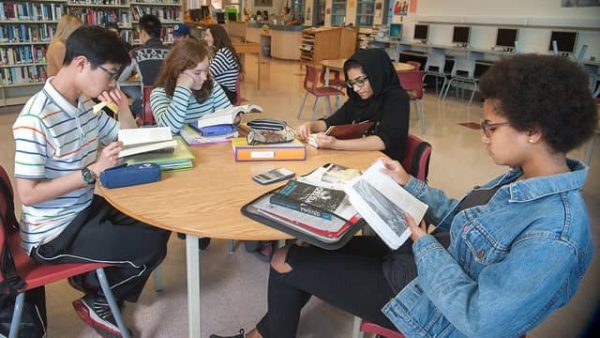Researcher: Perception is reality for student behavior in high school

A study co-authored by a Cato College of Education professor has found the social and physical surroundings of a school, and the way students perceive them, help inform student behavior.
Supported by a grant from the U.S. Department of Education and the William T. Grant Foundation, Anne Cash, assistant professor in the Department of Reading and Elementary Education, and her co-authors collected data from approximately 28,500 students from 58 high schools in Maryland. The study was published in the journal Psychology of Violence, an affiliate of the American Psychological Association.
The assessment measured school ownership (i.e., murals and positive behavior expectations), disorder (i.e., litter, graffiti and alcohol paraphernalia) and surveillance (i.e., school police officers and surveillance cameras). A separate measure considered interactions between students and school staff.
The study applied social disorganization theory (environmental conditions can influence individuals to engage in crime and violence) and broken windows theory (related to social disorganization theory, when lack of order signals a lack of social control in a neighborhood and thus encourages crime and delinquency) to the school environment.
The findings suggest that although there are no direct effects of the physical environment on students’ involvement in violence, there are significant indirect effects through students’ perceptions of rules and consequences.
“We learned that both lighting in schools and observed negative student behaviors in schools were both related to students’ perceptions of school rules and consequences … which in turn were related to students’ involvement in violence,” said Cash.
Broken windows theory was introduced in the 1980s and gained public attention again in 2000 after appearing in Malcolm Gladwell’s bestseller “The Tipping Point.” But Cash said the effects of social disorganization on school climate rarely have been studied.
“Most of the research using these theories has focused on neighborhoods,” said Cash. “We hypothesized that disorganization within schools, including physical (e.g. broken light fixtures, presence of litter, graffiti and drug and alcohol paraphernalia) and social (e.g. presence of negative student behaviors and absence of adult monitoring) disorder, would be related to increased violence. We believed that this would be true due to a relationship between disorganization and students’ perceptions of school climate.”
Researchers were surprised to discover that the presence of drug paraphernalia, graffiti and other signs of physical disorder were not related to students’ involvement in violence. “It is possible that these indicators are more aligned with adults’ expectations for what a school environment should look like than students,” Cash said.
The results also suggested the presence of adult monitoring and use of proactive management strategies is not related to reported violence. “We are engaging in additional research to evaluate whether a more relational approach to management – through actively connecting with students – has a stronger impact on high school students’ behavior than general monitoring,” said Cash.
Findings from this study stress the need for violence prevention through interventions that address physical needs, social needs and students’ perceptions of order and disorder within high schools. These interventions will establish clear norms for behavior, support the development of positive relationships and create physical environments that are safe and conducive for learning.
“Repairing the physical environment and reducing negative student behaviors only reduce and prevent violence if students perceive rules and consequences to be consistently enforced,” said Cash. “Schools benefit by creating environments in classrooms but also in the hallways, cafeterias and entrances, that are orderly and where expectations for behavior are clear.”
Sarah Lindstrom Johnson of Arizona State University; and Tracy Evian Waasdorp, Katrina Debnam, Adam Milam and Catherine Bradshaw of Johns Hopkins Bloomberg School of Public Health; co-authored the study.